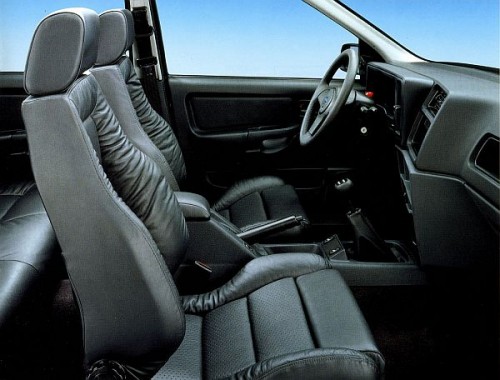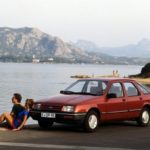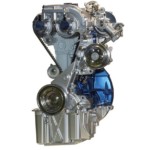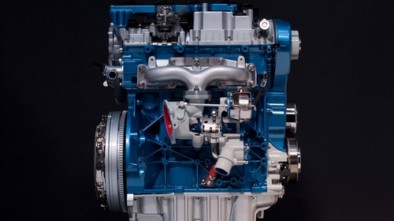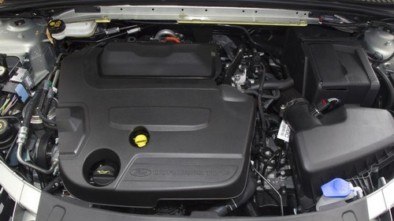Ford Sierra Cosworth 1986. -1992.- Model History
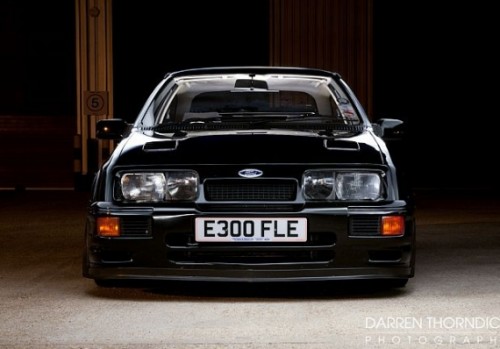
Ford Sierra Cosworth
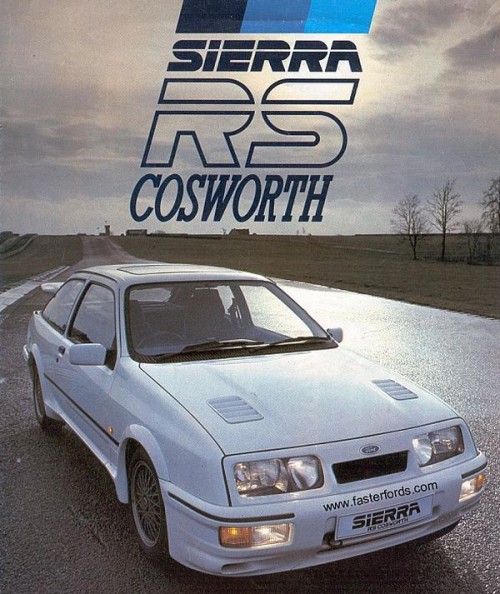
Ford Sierra Cosworth
Although due to awd drive, turbo engines and racing success, it is often compared to Lancia Delto HF Integrale, the truth is that these are similar but different cars at the same time. In short, Lancia could portray herself as a delicate lady, of superior manners and pedigree while Sierra Cosworth would be an English hooligan, shaved heads with bad tattoos on her hands and without a few teeth as a result of last night's hail in the pub. In addition, Delta HF specialized in rallying while Sierra Cosworth was successful on the circuit as well.
The history of this famous model begins in the mid-eighties when Ford realized that it did not have adequate weapons on rally tracks after the abolition of Group B and the withdrawal of the Ford RS 200 from competition. There were components but no package to bring them together, however in late 1985, Ford decided to send the old and proven Pinto engine to Cosworth for refinement. Although it is an engine dating from the early seventies, experts from Cosworth knew that it hides great potential, so they put a new head with two camshafts, a Garett turbocharger and a bunch of other small finishes on the old Pinto block. Thus prepared, the Cosworth YB engine had 204 hp from a 2 liter volume and, as will be shown later, a huge tuning potential. Namely, the racing examples easily crossed the magic limit of 500 hp, and today it is possible to get the same values on road models with a little tuning and a couple of parts from the tuning house catalog. Interestingly, this tremendous power can be obtained without touching the engine block or pistons, which is a great tribute to the team from Cosworth, the precise design and the quality materials they used.
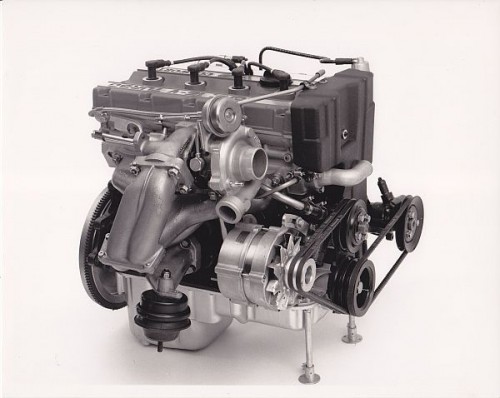
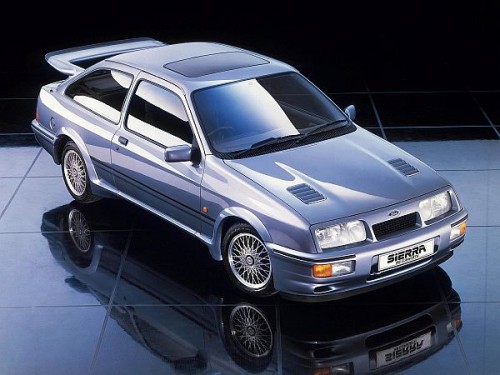
Ford Sierra Cosworth
Ford initially determined that the production of this version would be 5000 units, which was the limit for homologation in the Group A rally competition. Very quickly, the Sierra RS Cosworth was given permission to compete and Ford Motorsport embarked on racing performances. However, despite a great engine, reliable mechanics and good drivers, the Sierra RS Cosworth failed to dominate, mostly because it was still with rear-wheel drive while almost all competitors switched to all-wheel drive.
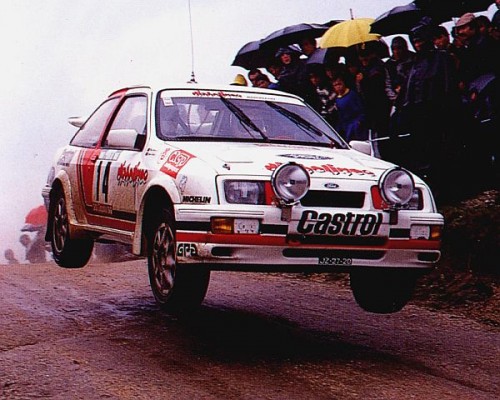
Ford Sierra Cosworth
At the same time, Ford realized that the greatest potential of this model was its competitiveness on the circuit tracks and not on the rally, so it decided that the next version would be homologated for the world championships of tourist vehicles. As a result, production was expanded by another 500 copies, all of which were sent to the Aston Martin Tickford workshop where they were converted to a new model called the Ford Sierra RS 500.
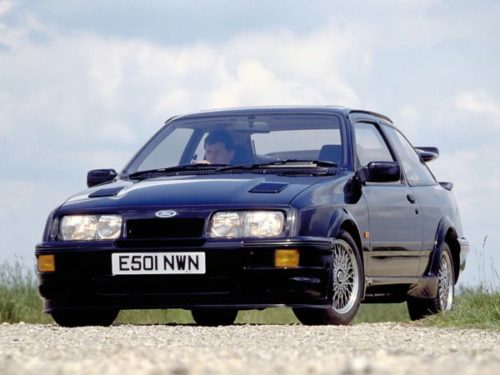
Ford Sierra Cosworth
Although the Sierra RS Cosworth and Sierra RS 500 are almost identical cars on the outside, the mechanical differences are numerous. For starters, the faithful YB engine has been boosted to 224 hp, thanks to a Garett G4 turbocharger with intercooler, an LSD differential has been mounted on the rear axle and larger brakes and stiffer springs have been fitted. The RS 500 was also much more expensive than the standard Sierra Cosworth and came only with a right-hand drive for the UK market.
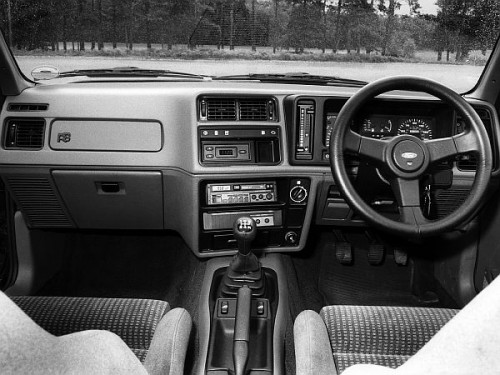
Ford Sierra Cosworth
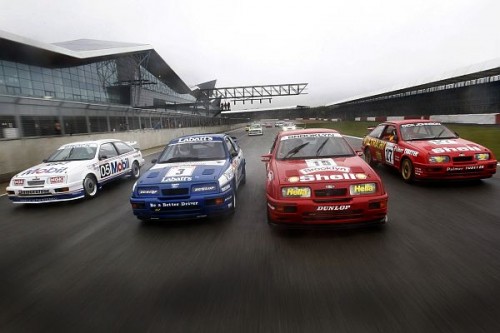
Ford Sierra Cosworth
However, that did not bother him to win almost every championship on the circuit tracks on which he competed in a couple of years. Between 1986 and 1989, the RS 500 ground the competition by winning the Spa 24, the famous Bathurst race in Australia and even the InterTEC 500 in Japan. This car was so dominant that it recorded as many as 40 victories in a row in the BTCC and in 1988 it was the champion in the famous DTM.
Changing competition rules, the RS 500 retired in the late 1988s and Ford decided to further develop the Sierra, but in a different form. Considering the complete restyling of the Sierra as a model and shutting down the three-door version, Ford transferred the mechanics of the RS Cosworth into a sedan body, thereby introducing a new model called the Sierra Saphire RS Cosworth that caught the eye of XNUMX.
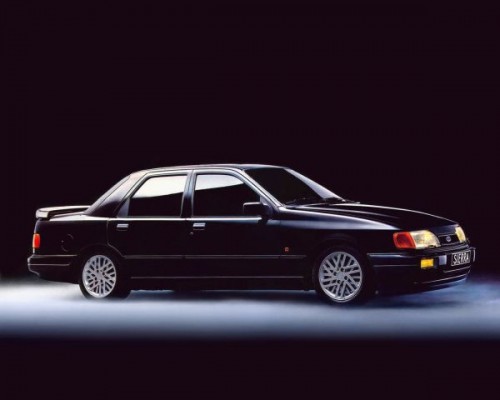
Ford Sierra Cosworth
The new model was mechanically identical to the earlier Sierra RS Cosworth which means it had 204hp, similar acceleration and performance. Since the bodywork was new, the interior was also improved as well as the list of accessories. The drivetrain was still on the rear axle and with these specifications, the Sierra Saphire Cosworth was a serious competitor to the BMW 328 E30 but for significantly less money. Therefore, it should come as no surprise that Ford managed to sell over 13.000 of these versions in just one year, which at the same time provided the comfort of a family car and the performance of a serious athlete.
However, the best is yet to come in 1990, the famous Sierra RS Cosworth 4 × 4, ie the model that represents the top of this series, the fastest European Ford at that time and the ultimate "sleeper" that hides dangerous mechanics and excellent performance under a normal body. For starters, power has been increased to 220 hp while torque has increased to 300 Nm. The time from 0 to 100 km / h was a shade worse (a tribute to the heavier weight) and was 6.9 seconds while the top speed was over 240 km / h. Although it looks almost identical to the 2WD version, the 4 × 4 has a slotted hood and is the easiest to distinguish.
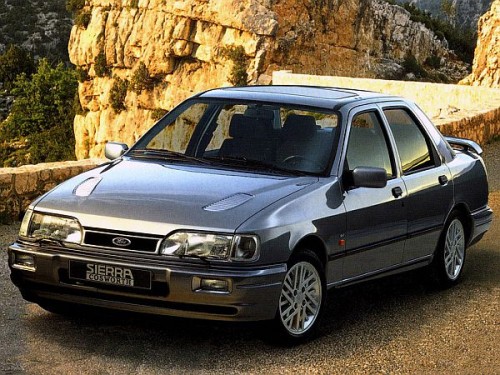
Ford Sierra Cosworth
The most important thing about this car was the drive, that is, the advanced 4 × 4 transmission with two viscous clutches. Ford seriously decided to make the Sierra a rally champion, so it gave the road model an integral drive. However, that decision also added a lot of pounds to Sierra, which ultimately cost her high-ranking competitions.

Ford Sierra Cosworth
However, immediately after the presentation, it was clear that the Sierra RS Cosworth 4 × 4 is a serious car, very fast in real conditions and capable of parrying much more expensive machines. The classic sedan body, discreet spoiler and details completely camouflaged this car on the street and made it invisible to the uninformed observer. This feature was very much liked by criminals who used the Sierra RS Cosworth 4 × 4 (as well as the earlier Saphire 2WD) on all occasions, relying on performance and inconspicuousness. This trend was especially pronounced in England, where most of the 12.250 copies made ended up. Because of that, thefts of this Cosworth were very frequent, which resulted in astronomical insurance prices. Given the number of reports of theft, there is a legend that says that every Sierra Cosworth in the UK has been stolen at least once and used at least once for a crime. The advantages of the Sierra RS Cosworth 4 × 4 were soon realized by the police, so several dozen cars were bought for this purpose, and even today, 22 years after the cessation of production, this car has a "hooligan" character and label that will never get rid of.
However, despite its efforts by Ford’s motorsport department, excellent mechanics and predisposition, the Sierra RS Cosworth 4 × 4 disappointed on the track. Ford failed to win a single title and rally wins were rare. The reason is, simply, the great weight that was a handicap. However, it cannot be said that this Sierra was an insignificant participant in the races. Because it was much better quality, more reliable and cheaper than the Delta HF Integrale, the Sierra RS Cosworth 4 × 4 was a favorite choice of smaller teams and private individuals and as such remained in racing use for many years to come. Because of those qualities, it was a popular car on our tracks, and during the nineties, several copies were driven in our country.
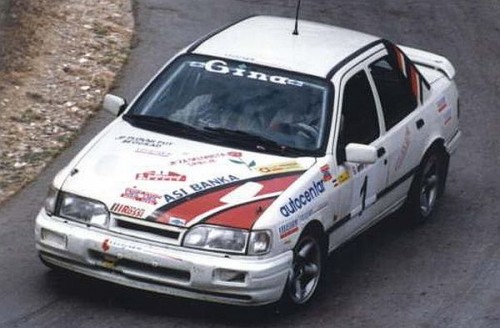
Ford Sierra Cosworth
The car in the picture belonged to Obren Tešić, who was one of our best rally drivers and who unfortunately died in 1996 while driving this Sierra at the Trayal Rally. In addition to racing models, Sierre RS Cosworth were present on the streets in our country, but the 4s and (non) maintenance pretty much decimated them. However, thanks to the quality and good support of spare parts, owning a Cosworth like this is far more worry-free, easier and cheaper than the competitors. Therefore, we suggest that you immediately look for the Sierra RS Cosworth 4 × XNUMX because their price is slowly rising and they will soon be unattainable…
Text: V.Herbez
Photo credit: autowp.ru, fastfords.com
Source: autocaffe.net
Recommendation of similar texts:

Hi there, I am Mladen and I am an auto enthusiast. I started this blog years ago to help like minded people share information about latest cars, car servicing ideas, used car info, exotic cars, and auto technology. You will find helpful articles and videos on a wide variety of cars - Audi, Mercedes, Toyota, Porsche, Volvo, BMW and much more. Ping us if you have anything cool to share on latest cars or on how to make older cars more efficient, or just want to say hi!

